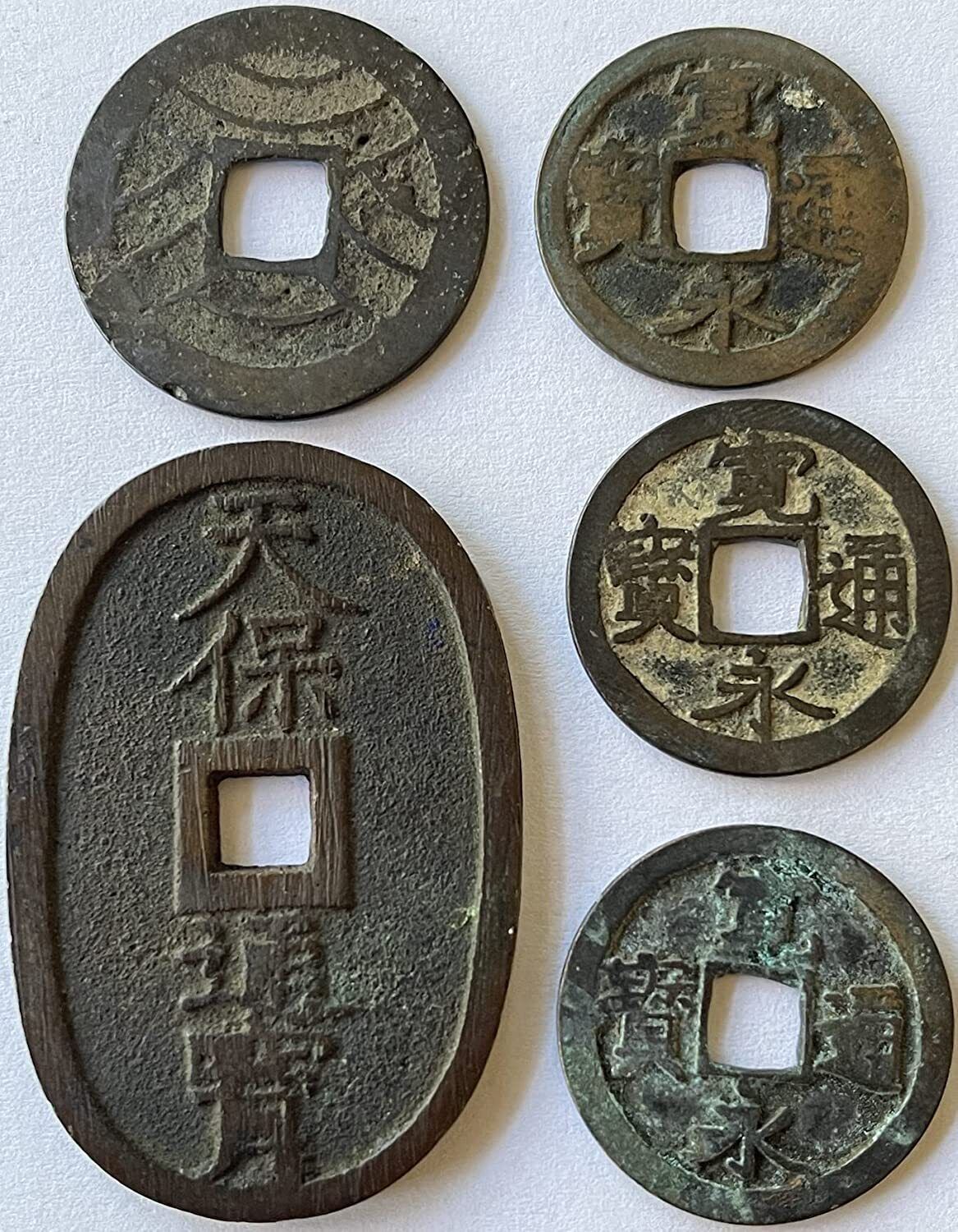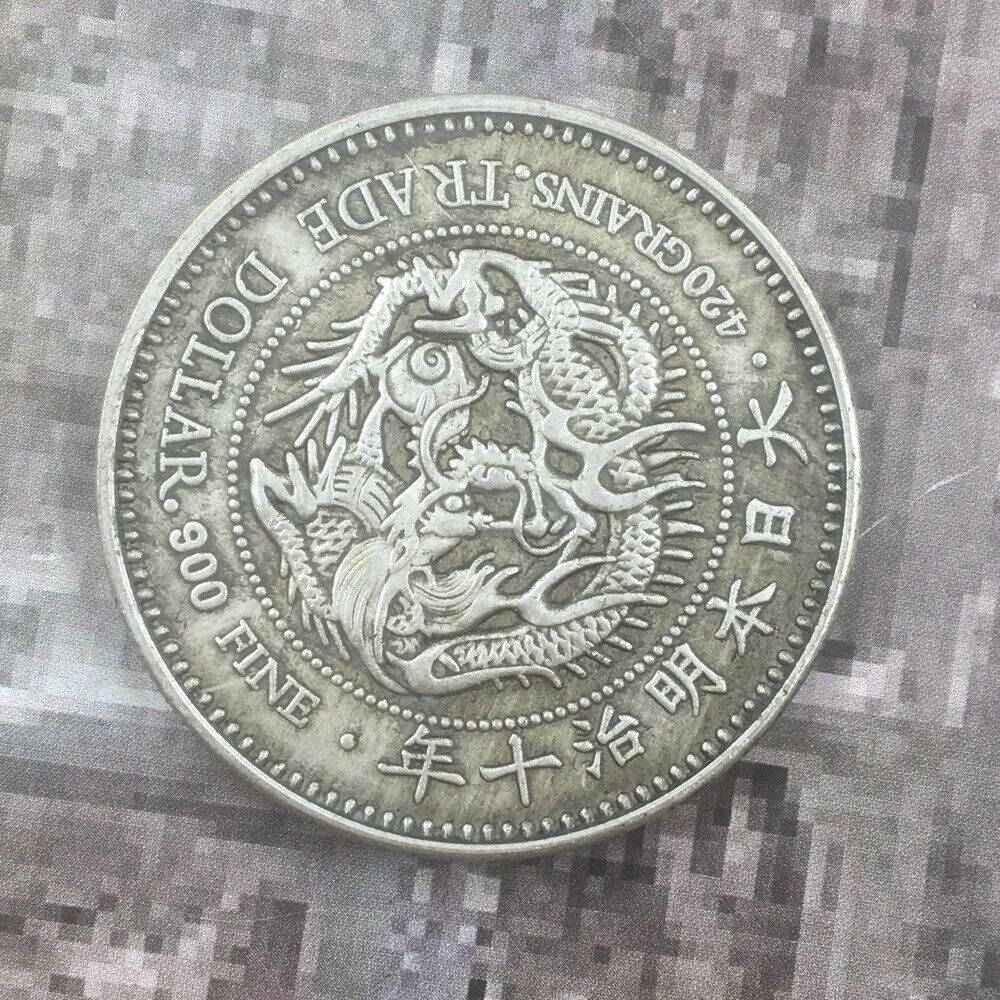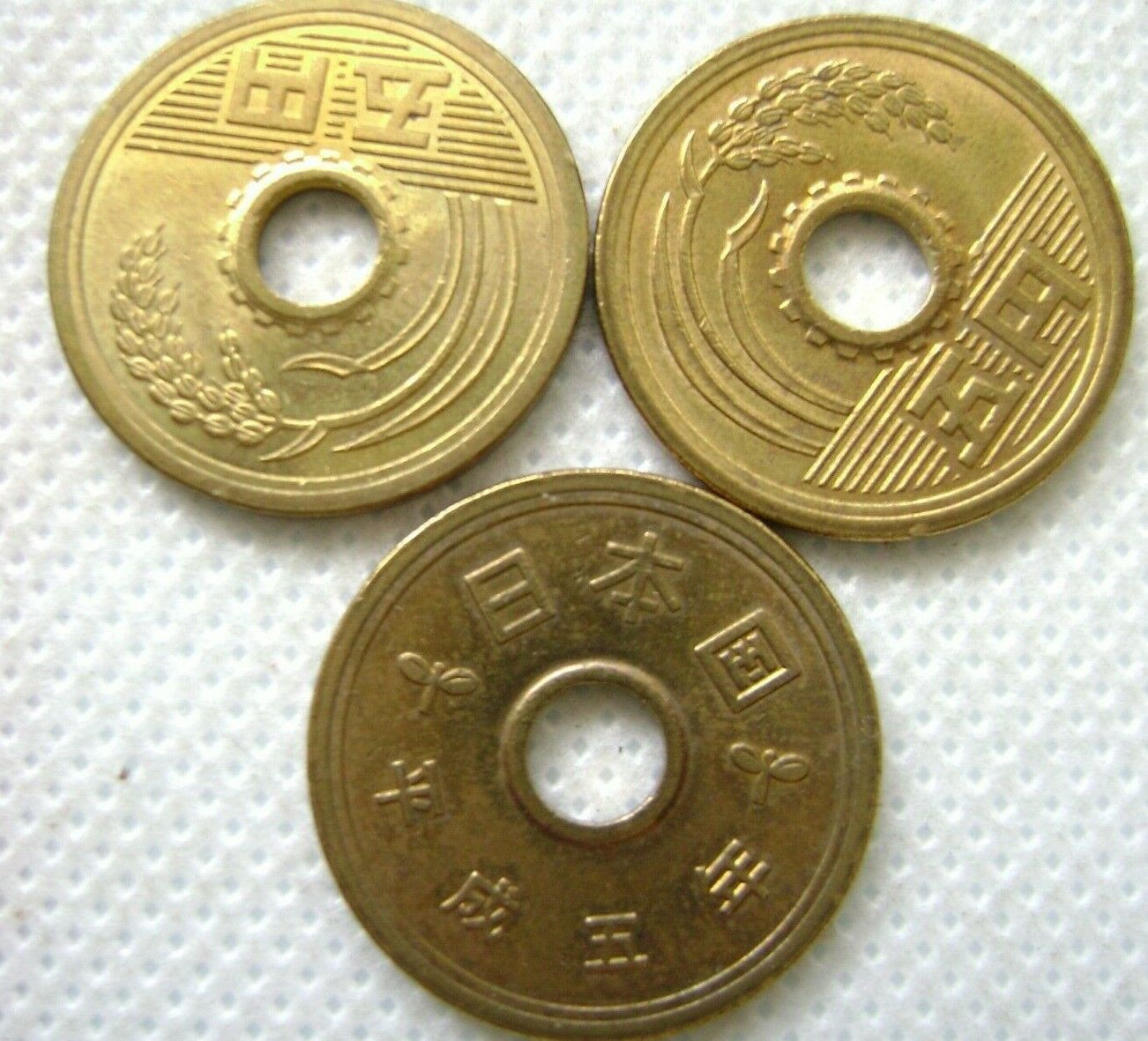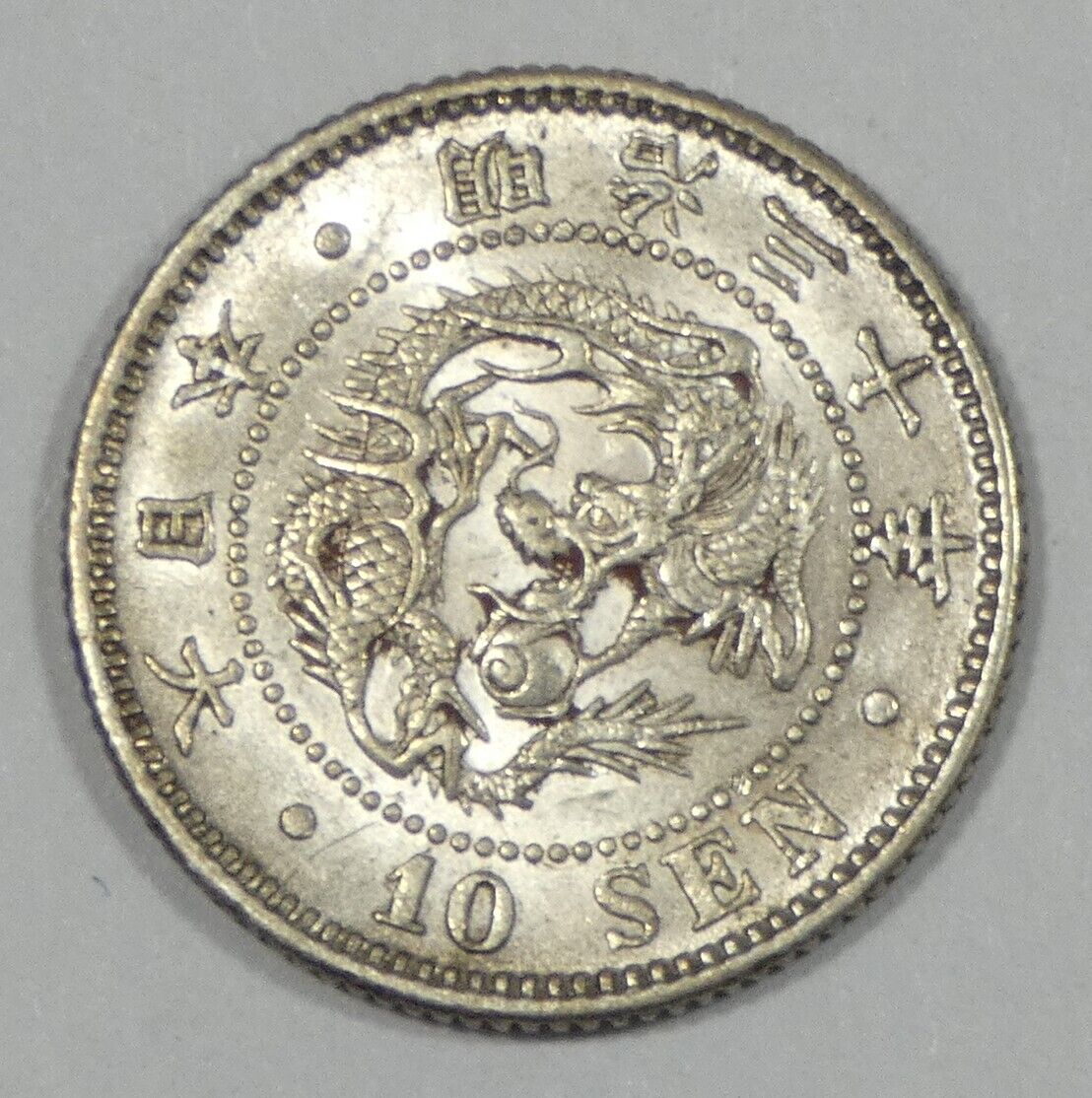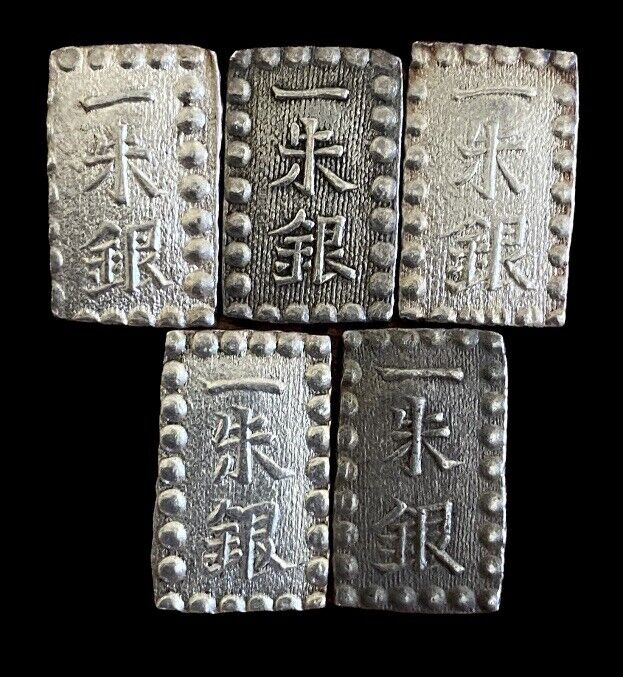-40%
1400 -1860 Japanese Samurai / Shogun Era Mon Coin Set. 5 Authentic Coins I
$ 15.83
- Description
- Size Guide
Description
Comes with3 - 1 Mon Coins Issued From 1400-
1860
1- 2 Mon Coin Issued From 1600-1860
1- 100 Mon Coin Issued From 1820-1860
The mon (文) was the currency of Japan from the Muromachi period in 1336 until the early Meiji period in 1870. It co-circulated with the new sen until 1891. The Kanji for mon is 文 and the character for currency was widely used in the Chinese-character cultural sphere, e.g. Chinese wen, Korean mun. Throughout Japanese history, there were many different styles of currency of many shapes, styles, designs, sizes and materials, including gold, silver, bronze, etc. Coins denominated in mon were cast in copper or iron and circulated alongside silver and gold ingots denominated in shu, bu and ryō, with 4000 mon = 16 shu = 4 bu = 1 ryo. In 1869, due to depreciation against gold, the new fixing officially was set for 1 ryo/yen = equal to 10.000 mon. The yen started to replace the old duodecimal denominations in 1870: in 3rd quarter of 1870, the first new coins appeared, namely 5, 10, 50 sen silver and 2, 5, 10, 20 Yen. Smaller sen coins did not appear before spring, 1873.[1] So the mon coins (1, 4, 100, 250 mon etc.) remained a necessity for ordinary peoples commodities and were allowed to circulate until 31st December, 1891. From January 1, 1954 onward, the mon became invalid: postwar inflation had removed sen, mon etc. denominations smaller than 1 Yen. Due to the missing small coinage, the Japanese posts e.g. issued their first stamps (Meiji 4.3.1 / 1871.4.20) in mon and fixed postal rates in mon until April, 1872 (Meiji 5.2.28).[2] During the co-existence of the mon with the sen between 1870 and 1891, the metal content of the old currency became important. Official exchange for coins from 1871.6.27: 4 copper mon = 2 rin, 1 bronze mon = 1 rin (1 rin = 1/10th of a sen). So while not all mon were valued equally, their metal kind counted after the transition to decimal sen: bronze was valued more highly than copper. The first physical rin denomination was introduced 1873 with the 1 rin coin (with the 5 rin coin introduced in 1916), as until that time the rin had existed only
